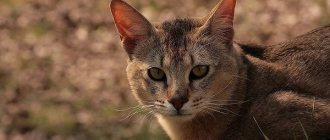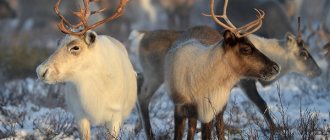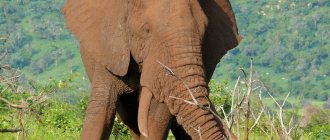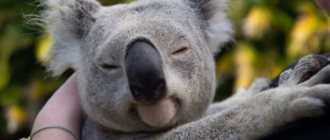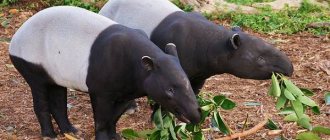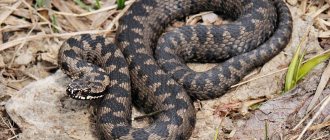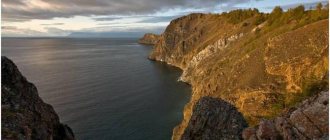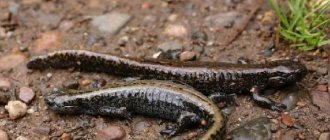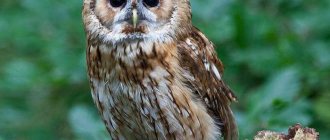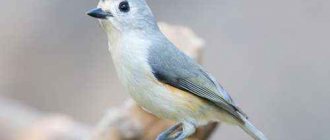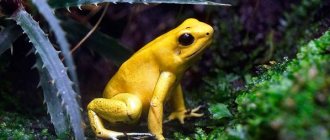| ✈✈✈ List of open countries during coronavirus. ✈✈✈ Where to go on vacation abroad ✈✈✈ |
16 779
In this post:
- Fauna of the peninsula - what is worth knowing.
- Animals of Crimea - Red Book.
The fauna of Crimea is not rich, but unique. About 60 species of mammals live on a relatively small area of 26 thousand square kilometers. The bulk are endemic animals found exclusively on the peninsula. Many representatives of the Crimean fauna are included in the Red Book. The most striking, interesting species are described below.
Mountain and steppe fox
Mountain foxes live in the Crimean mountains, their steppe subspecies lives in the steppe. They feed on mice, gophers, hamsters, hedgehogs, bird eggs, and sometimes birds, hares, and wild rabbits.
When there is nothing to eat, insects, frogs, and lizards are used. Sometimes animals do not disdain carrion. Tourists should be aware that this animal may be susceptible to rabies. And if earlier they tried to somehow vaccinate them, now no one does this, so when meeting them it is better to be careful.
But there are practically no frequent encounters with foxes because they are cautious and timid. In very rare cases, when they meet, they lose their sense of fear.
In the photo there is a steppe fox
Animals of Crimea
The geographical position of the peninsula is unique. Three climatic zones with a high level of diversity are represented: foothills, temperate continental, subtropical. The territorial proximity of the Black and Azov seas, the Crimean mountains, 50 lakes, more than 250 rivers determined the development of rare plants and the habitat of endemic animals, that is, living exclusively in these conditions.
Crimea is called little Australia for the uniqueness of its fauna in a relatively small area (approximately 26,000 sq. km).
In the historical past, giraffes and ostriches lived on the peninsula. Climate change has led to the emergence of reindeer and arctic foxes. Although researchers note that the fauna of Crimea is poorer than neighboring regions, it reflects an amazing combination of diverse species that have adapted to local landscape habitat conditions.
The impoverishment of the Crimean fauna, according to zoologists, is explained not only by natural changes, but also by human activity and the uncontrolled extermination of wild animals. Currently, there are five main groups of the peninsula’s diverse fauna:
- steppe;
- forest-steppe;
- mountain forest;
- mountain;
- South Coast.
Steppes, mountains and the sea create a conglomerate environment in which the animals of Crimea are represented by terrestrial mammals of 58 species, marine mammals - 4 species, other ichthyofauna is represented by 200 species of fish, more than 200 species of birds, 14 species of reptiles. Among the inhabitants there are many aborigines, others are transit guests or settled after a period of acclimatization.
Weasel
At first glance, this is a tiny and cute animal. But even the foxes and wolves that once lived on the peninsula are difficult to compare with his bloodthirstiness.
This funny animal is often tamed and a more gentle pet is difficult to find. She easily finds a common language with other pets in the family and brings fun and good mood, thanks to her friendly disposition and curiosity.
Rodents and insects never appear in the house where the weasel lives. One bad thing is that in captivity weasels have too short a life. They can barely live past 5 years of age.
In the photo there is an animal weasel
Azovka (porpoise)
Azovka, contrary to its name, in Crimea is found not only in the Azov waters, but also in the Black Sea waters.
This is a relatively small dolphin, up to one and a half meters long. It differs from the bottlenose dolphin and common dolphin in its blunter head, with a short facial region. The back is gray or black, the belly is usually lighter.
Azovka often falls victim to fishing nets or ship propellers. Large-scale construction work in the waters of the Kerch Strait did not have the best effect on the state of the population. The Red Book of Crimea considers this representative of the cetacean order to be a rare species.
Every year, residents and guests of Crimea observe a sad picture - dolphins washed ashore. Most often, the cause is injury or illness. Our task in this case is to show consciousness and not be indifferent to the misfortune of our smaller brothers. A special mobile marine mammal rescue center has been created on the peninsula, and its employees are distributing important recommendations to the population. So, what to do if you see a live dolphin in shallow water or on the shore?
The most important thing is to never push an animal into the sea! Most likely, it is weakened or sick, and without qualified help it is doomed to death. You must contact the rescue center at the numbers listed below and receive clear instructions for further action while professionals get to you and the victim.
Rescue center telephone number: +7-916-40-90-148, +7-978-779-73-61. If possible, please spread this information. This can save the life of a rare animal!
Belodushka
This is the name of the stone marten, whose throat and chest are decorated with white fur. Elegant, graceful and beautiful at first glance, the white-haired woman is not alien to the traits of a brave, voracious and incredibly active predator.
They can also eat vegetarian food. In the summer and autumn seasons, martens eat thorns, hawthorns, pears and grapes. These animals are very disliked by people involved in agriculture.
If a marten gets into a chicken coop, it will quickly strangle all the chickens that are there with amazing dexterity. Martens have always been heartless towards chickens.
In the photo there is a stone marten or white marten
Badger
These animals of the Republic of Crimea are peaceful representatives of the mustelidae family. Its relatives are minks, otters, sables, wolverines, stoats, ferrets and martens.
Badgers are energetic and brave animals. Such qualities are manifested not in bloody showdowns, but in a constant desire for tireless useful work.
Any architect would envy his burrows. They consist of several floors, resemble caves and reach a length of about 20 m. For each floor, the animals have their own purpose, and the floor is covered with fragrant grass everywhere. This clean animal cleans its hole every day, and the grass covering there is changed twice a year.
Badger holes are being improved all the time; they are expanding and becoming more comfortable. Over time, such dwellings turn into entire badger cities.
The animal feeds on nuts, mushrooms, acorns, wild berries, and root vegetables. Among living creatures, badgers like snails, mice and gophers. These animals are great connoisseurs of honey.
They get it from the nests of wild bees. And they are not afraid of any bees with their stings. The animals endure all these painful executions with courage because they love honey very much.
This is a fairly peaceful creature. But if the matter concerns him, his brothers and his home, then they will stand to the end. Badgers don't let their own people get hurt.
Badger in the photo
Relict juniper forests
The term “relict” refers to a virgin ancient forest that has managed to survive for many centuries and remains untouched by humans. The relict flora of Crimea includes juniper groves. Juniper is an evergreen, coniferous shrub from the Cypress family. There are about 70 species of juniper, 5 of which grow in Crimea.
In the photo: Crimean juniper
The tall juniper deserves special attention. Its height can reach 10 m. Trees most often have a regular, neat cone shape. Juniper branches are decorated with soft green-gray needles that do not prick your hands on contact. In spring, the tree is decorated with cones, which subsequently release yellow pollen. By autumn, the branches are covered with bright blue cones. Juniper belongs to the category of forest orderlies.
The trees destroy microbes within a radius of 10 m, releasing special substances into the air. Unfortunately, its wood is a valuable species, so the groves are barbarously destroyed, despite the current prohibitions and a system of fines. Juniper forests grow mainly in the south of the peninsula. The Ai-Danil sanatorium even has a special trail that runs through one of the groves. Vacationers take daily walks along it, during which they inhale the healing air.
Raccoon dog
This Far Eastern predator underwent acclimatization on the peninsula twice. It is not entirely suitable for fishing. During the first resettlement, raccoon dogs failed to take root in Crimea.
And the second was crowned with success. They chose the flat areas of the Belogorsk and Leninsky districts. These dogs are omnivores, but prefer animal food.
Raccoon dog
Red Book
The peninsula is home to a huge number of exceptional animals that are on the verge of extinction. It was decided to create a document about such inhabitants.
The Red Book uses an eight-point scale to determine the degree of rarity. Animals of Crimea in the Red Book of Russia are the tricolored and pointed-eared bat, the common longwing, the small and large horseshoe bat, the black-headed gull, and the great curlew.
A wild boar
Since ancient times, wild boars lived in Crimea, but in the 19th century they were completely exterminated. In 1957, this issue was taken seriously and one wild boar was brought from the Chernigov region and 34 female wild boar from the Primorsky Territory.
After this, their population increased markedly. These omnivores enjoy a variety of roots. Wild boars love to eat acorns, mushrooms, fruits and nuts.
Sometimes they can eat insects, their larvae, rodents, and bird eggs. And in times of extreme hunger, animals do not disdain carrion. When they see a person, wild boars try to retreat. But it is worth remembering that these animals are vindictive and fearless.
A wild boar
Lizard under snake cover. Legless yellowbell
Zheltopuzik is a touching, harmless creature, ... 90 percent similar to a snake! In an attempt to protect the lizard from the attacks of predators, Mother Nature “conjured” its body, lengthening it to 1.5 meters. But a person of the “Crimean tourist” subspecies, like a matador to a bull, reacts to a “yellow belly” who accidentally comes into view. The lizard usually suffers an undeserved beating without having time to retreat from the meeting place.
And it’s easy to meet the poor thing on the southern coast of the peninsula. The range stretches from the steppe part of Sevastopol to Feodosia, not excluding the Kerch Peninsula. The yellow color scheme of the lizard snake has olive-brown, dirty yellow, and sometimes reddish-brown hues. The main thing that distinguishes it from snakes is the presence of eyelids, as well as external auditory openings. The Crimean yellowbell, which has seen its sights, has a very sad and wise look. Of course... Why is he suffering?
The harmless lizard is an endangered species of Crimean animals and is useful by eating large insects, slugs and snails. Unenviable fate! She stands guard over the harvest of vegetables and fruits, but she herself needs protection... Do you want to become a yellow-bellied guard?
Roe
Until some time, these slender animals lived in the forests and steppes of the peninsula. Over time, they were forced out by people into areas of mountains and forests. Currently, they inhabit the slopes of the Main Mountain Range. In many places in the forests you can find this gentle and graceful animal.
When meeting a person, a roe deer first completely freezes, and then, when it realizes that it has been noticed, it quickly rushes into the forest thickets.
Roe deer have a striking resemblance to deer. They eat herbaceous plants, woody shoots, tree buds, leaves and bark. Male roe deer have the same antlers as male deer, which they shed in late summer and early autumn. In the spring, new antlers sprout.
Roe deer have enemies in the forest - foxes and martens. But their worst enemy is the poacher. Animals have excellent hearing. One roe deer can communicate danger to all its fellows. They pick up this sound within a radius of 3 km.
In the photo there is a roe deer
Insects
The entomofauna of the Crimean peninsula has now been studied quite well, so we can safely say that in this territory there are representatives of five orders: Diptera, Lepidoptera, Hymenoptera, Coleoptera and Hemiptera. About 5% of insects are represented by smaller species, the diversity of which varies from a few units to hundreds.
Mosquitoes
The so-called mosquitoes are very numerous insects in Crimea. People are plagued by female mosquitoes that use human blood to reproduce. The male mosquito is harmless and therefore feeds on flower nectar. About four dozen species of such bloodsuckers live on the peninsula, and their peak activity occurs in June and July.
Mokretsy
Biting insects are very similar in appearance to mosquitoes, but are significantly smaller in size. Painful bites are accompanied by long-lasting itching. The main danger of this species is its ability to transmit hemorrhagic fever and tularemia, which are very dangerous for humans.
Scolia spotted
A large wasp from the Scolia family has a body length of up to 5.5 cm. It is distinguished by a black coloration of the main background of the body, wide yellowish-brown wings with a purple tint. The head of Scolia is round, without hairs, and shiny bright orange. The occipital region is black, matte. The eyes are small and widely spaced.
Brilliant beauty
The dragonfly of the dragonfly family has pronounced sexual dimorphism. The male's body has a metallic sheen and a blue color with a greenish tint. In the middle of the wing there is a wide metallic-shiny blue or dark blue band. The female's wings are almost colorless, with metallic shiny green veins. The body color of the female is golden-green or bronze-green.
Crimean grasshopper
An orthoptera insect belonging to the family Grasshoppers is a pest of agricultural land and ornamental plants. The body length of an adult male is 29 mm. Color varies greatly. More often there are individuals with dark ocher and brown-red body colors. Some specimens are purely green in color.
Hawkmoth oleander
A representative of the hawk moth family has a wingspan of 100-125 mm. On the front wings of the butterfly there are whitish and pink wavy stripes, as well as a large dark purple longitudinal spot near the inner corner. The insect's chest is greenish-gray in color, and the upper part of the abdomen is olive-green in color.
Crimean ground beetle
Bright representatives of the ground beetle family are endemic to the Crimean peninsula and are characterized by a body length of 52 mm. The color of the insect varies from blue to purple, green or almost black shades. There is a metallic sheen on the lower black side of the body. The forms existing in Crimea differ in color.
Return to content
Crimean red deer
This largest animal of Crimea lives in the forests of the mountains. The weight of male deer reaches up to 260 kg, with a height at the withers of about 140 cm. They are light-footed, slender, with a proud head carriage and wide branched antlers.
Crimean deer live 60-70 years. The age of young males is calculated by the number of processes on the horns. The chewing surface of the teeth helps determine the age of adults.
The main weapon of deer is their antlers. On the territory of Crimea, these animals have no enemies other than hunters. Therefore, they use their weapons only during mating fights for a female. Such battles take place mainly in September and are accompanied by a wild roar of appeal.
The number of deer in Crimea has never been the same. And the beginning of the 20th century was remembered for the fact that this species almost completely disappeared. Since 1923, the shooting of these animals was prohibited, which helped to increase their number to 2000 individuals by 1943.
Crimean red deer
Fish
The ichthyofauna of Crimea is very diverse, and the fish existing here are represented by species that live in the waters of the Azov and Black Seas, and also inhabit various fresh water bodies located on the territory of the peninsula.
Russian sturgeon
A representative of the sturgeon family has a residential and anadromous form. The fish is distinguished by the presence of gill membranes attached to the intergill space with the absence of a fold, a short and rounded snout, and a discontinuous lower lip. The body is usually covered with rows of star-shaped plates. The back area is characterized by a gray-brown color, and the sides are gray-yellow.
Sterlet
Valuable commercial fish of the sturgeon family are a popular object of lake and pond farming. Compared to other members of the family, sterlet enters sexual maturity earlier and uses mainly mosquito larvae as food. It is assumed that the natural diet of females and males is noticeably different, which is due to different environmental conditions.
Black Sea-Azov Shemaya
A representative of a very rare species from the cyprinid family has an elongated and low body, with lateral compression, the maximum length of which, as a rule, does not exceed 30-35 cm. The dorsal fin is noticeably set back. The ray-finned fish is characterized by a pelagic type of color, has a dark green back with a bluish tint, as well as grayish fins.
Black Sea herring
A representative of the herring family is distinguished by a slanted, laterally compressed body, the height of which is approximately 19-35% of the total length. The fish has a strongly pronounced keel, a low and narrow head, a large mouth with well-developed teeth that are noticeable to the touch. The color of the dorsal surface of the fish is greenish-blue, with a pronounced silvery-white coloration on the sides of the body.
Blacktip shark
The representative of the order Carchariformes has a spindle-shaped body, a short and pointed snout, rather long gill slits, and is also distinguished by the absence of a crest. Most individuals are distinguished by black edging at the tips of their fins. The average length of an adult shark is one and a half meters. An active predator eats schooling small fish, and juveniles form aggregations with size segregation.
Toothed grouper
Belonging to the Stone Perch family, the fish is characterized by a fairly powerful body, the maximum length of which is 162-164 cm, with a weight of 34-35 kg. In this case, the upper jaw of the fish extends beyond the vertical edges of the eye. A distinctive feature of the grouper is the presence of a rounded caudal fin and a retractable upper jaw, which takes the shape of a tube as the mouth opens.
Spotted wrasse
The fish is medium in size, has an elongated body and a long, pointed head. Males are noticeably larger than females. In the snout area there are thick and rather fleshy lips, and the support of the long dorsal fin is provided by hard rays located in the front part. A specific feature of the spotted wrasse is very pronounced sexual dimorphism, as well as a change in color during the spawning period.
Mokoy
Representatives of the monotypic genus are distinguished by an elongated and slender body with long pectoral fins. The color of the upper part of the body is blue, and on the sides the color becomes lighter, so the belly has an almost white color. The maximum body length of an adult blue shark exceeds three meters, with an average weight of 200 kg. The fish is distinguished by triangular and beveled teeth with pronounced serrations.
Black Sea trout
Representatives of the salmon subspecies are found in residential and anadromous forms. A very valuable commercial object and a popular species for sport fishing, it is distinguished by its medium size and standard external characteristics for the class Ray-finned fish and the order Salmonidae. The basis of nutrition of the Black Sea trout consists of amphipods, as well as aquatic insect larvae and their adult aerial forms.
Return to content
Teledut squirrel
The appearance of this animal in Crimea was noticed relatively recently. This animal is somewhat larger than an ordinary squirrel. This becomes especially noticeable when the animal dresses in a winter coat. They are bright red in summer and turn light gray in winter.
Their distinctive feature is the beautiful, clearly visible tassels on the ears, and they always remain red in color. They live not only in the forest, but also in city parks.
They prefer parks because there they receive various treats from visitors. These thrifty animals love nuts, acorns, pine cones, seeds and fruit pits.
In the photo there is a teledut squirrel
Coastal fauna
The fauna of the southern coast is represented by reptiles and invertebrate species. Lizards are especially common.
Crimean gecko
In former times, it was found everywhere even in the territories of noisy cities - on fences, near the walls of houses, among ancient buildings. Massive development has destroyed gecko habitats. Favorite ruins with many passages, shelters, and crevices began to disappear from the face of the earth.
Cute lizards not only decorated the environment with an attractive appearance, but also curbed the spread of harmful insects. The enemies of the geckos were stray cats, which played a significant role in the decline of the lizards.
Serpentine yellowbell
Many people mistake the creeping representative of the spindles for a poisonous reptile, the steppe viper. Despite its threatening appearance and size, approximately 1-1.25 meters long, the animal is completely harmless if you do not catch it and do not test your patience.
He has no natural aggression. Lives only in Crimea. The yellow belly moves slowly and does not rush at anyone. The body is slightly flattened laterally with smooth and shiny skin. The animal is listed in the Red Book. The threat of extinction is trivial - the extermination of spindles often occurs due to their frightening appearance and confusion with snakes.
It is easy to distinguish yellowbellies from poisonous reptiles - their eyes are protected by blinking eyelids, unlike snakes.
The fauna of the subtropical zone of Crimea is rich in insects. Mediterranean views are familiar to anyone who has visited the peninsula in the summer.
Cicadas
Many have heard cracking sounds, but have never seen these insects. The cicada is slightly larger than the average fly and always hides among the leaves. Singing organs with special resonators are located on the abdomen. The performers seem to be competing in the volume of choral singing. Cicadas live only for a season. Interestingly, these insects are diurnal, unlike grasshoppers or crickets.
Mantises
The name is given for the appearance of the insect, whose front legs are always raised. It is like a person's hands raised to heaven in prayer. In fact, praying mantises lie in wait for prey before attacking by sitting for a long time, hiding in the leaves. The growth of insects up to 4-5 cm allows them to sometimes engage in fights with sparrows. According to legend, the person on whom the praying mantis sits will be happy for a long time.
